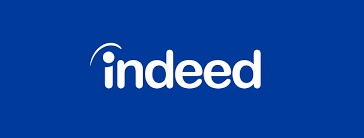sales CRM
-
How Many Authors Does it Take to Screw in a LightBulb Highlighting Selling Skills?
- September 22, 2022
- Posted by: Dave Kurlan
- Category: Understanding the Sales Force

Dan Caramanico alerted me to this dubious September 19, hbr.com article that explains their 5 Skills Every Salesperson Needs to Succeed. It took three consultants to screw in the lightbulb that illuminates their five stupid-as-shit skills so let’s take a look:
-
The Many Different Selling Roles and How They Differ – Part 1
- July 27, 2022
- Posted by: Dave Kurlan
- Category: Understanding the Sales Force

The same kind of thinking is required when thinking about the various roles of salespeople. We can name them: Account Executive, Territory Manager, Business Development Rep, Sales Development Rep, Account Manager, Key Account Manager, National Account Manager, Channel Manager, Application Engineer, Sales Consultant, Inside Sales, Outside Sales, and more.
To further complicate things, in some companies and industries, Sales Managers function as salespeople and Sales VPs function as Sales Managers.
While the above roles have selling as a primary responsibility, there are as many differences to selling roles as there are differences to the class or style of cars. Today, we’ll explore the difference between an Account Executive and a Business Development Rep.
-
10 Steps to Crushing Your Sales Forecasts
- February 18, 2022
- Posted by: Dave Kurlan
- Category: Understanding the Sales Force

Times change but one constant is the requirement for monthly, quarterly and annual sales forecasts. It used to be difficult to come up with that number but with the technology we have today, a single click in our CRM applications should show us the accurate number. But there is always a lingering question that accompanies that click: Is that really the accurate number?
-
Eliminate Delayed Closings Once and for All
- May 14, 2018
- Posted by: Dave Kurlan
- Category: Understanding the Sales Force

A long time ago I realized that in the suburbs outside of Boston, new leaves reach full size each Spring on May 11. This year, with the cold April we endured, May 11 came and went and the leaves were delayed.
That said, spring leaves on May 11 are exponentially more predictable than pipeline opportunities. Why might an opportunity not close when it was forecast to?
Technically, there are seven possibilities:
-
Is it Your Salespeople or Did You Make a Bad Decision?
- October 19, 2016
- Posted by: Dave Kurlan
- Category: Understanding the Sales Force

Salesforce.com.
Consider this quote from a client:
“You were right, you know. Six months ago, when you told us that we wouldn’t be happy with the integration of the customized sales process into Salesforce.com, we didn’t understand what you meant. But now we do. It’s clunky, not really part of the interface, the customization cost us tens of thousands of dollars, and it doesn’t work the way we need it to. We are so sorry we didn’t listen because that train has left the station.”
-
The 3 Most Important Questions about Sales Process and My Answers
- May 9, 2016
- Posted by: Dave Kurlan
- Category: Understanding the Sales Force

With sales process finally getting the necessary attention, we should turn our attention to the three related issues that need to be addressed. Which sales process should you select, and into which CRM application should it be integrated and how can it be customized?
-
Sales Pros! 10 Things You Must Do Before Leaving for Summer Vacation
- July 1, 2015
- Posted by: Dave Kurlan
- Category: Understanding the Sales Force

Are you going to the beach? On a sail? On a tour? To another country? To a lodge? To a resort? Regardless of your destination or purpose, make sure you bring some good books, disconnect from your email and social networks, and actually use the time to recharge. That’s good old common sense. But if you really want to kick some ass when you return from vacation, you’ll want to make sure you do these important things too:
-
Sales Leadership Observations about Pipeline and Terminations
- June 3, 2013
- Posted by: Dave Kurlan
- Category: Understanding the Sales Force
It gets a bit scary when people who are experts in one thing write about another. Today’s example was sent to me by OMG partner Mike Shannon. He sent along a recent BtoBonline.com post by Jeff Perkins. Jeff suggests that the sales funnel is a thing of the past, but his examples, and therefore reasons, are way off base. He seems confused about what the sales pipeline or funnel is supposed to do for us.

